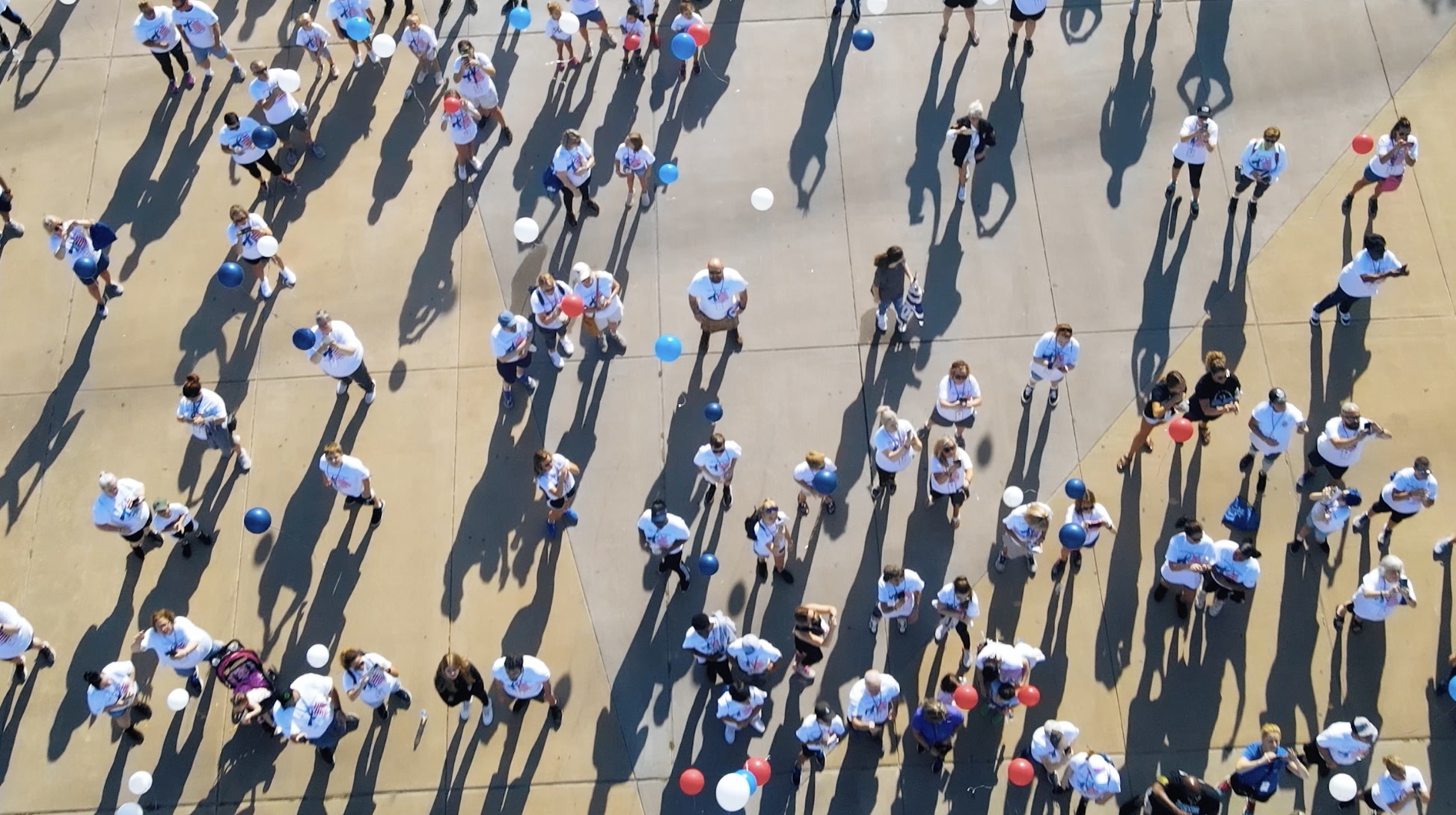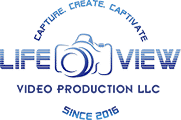
The In-Depth Guide to Getting Stunning Drone Footage for your Business
Aerial photography and videography is becoming increasingly popular among businesses as a way to capture unique perspectives of their services, events, and company location. Drones provide a relatively easy and accessible way to get these stunning shots. But before you can get your business up in the air, there are a few things you need to do to prepare for your drone shoot.
Scout out locations
When choosing a location for your drone shoot, there are a few things you’ll need to take into account.
What is the purpose of the video?
First, consider the purpose of the drone shot in your video. If it’s an establishing shot to introduce your new business location, you should probably include some aerial shots showing different angles of your new building and its surrounding areas. Let’s say you’re capturing an overhead view of an outdoor event your company is hosting; then you know your location already and can move onto the next steps.

If you’re scouting out new locations for a creative short film or commercial shoot, then you have some flexibility on where you can film. Just keep in mind that some locations don’t allow drone use, such as the city of Washington, D.C.
What type of scenery and lighting do you need?

While you’re scouting locations, you’ll need to consider things like lighting, the terrain, and any obstacles that could get in the way of your shot.
Are you looking for a beautiful landscape, a busy cityscape, or some sort of action, like a car driving down a road? Do you need it to be bright and sunny or take place at night? Does this location get enough natural or manmade light for you to get your shot?
It’s important to consider how the location will look at certain times of day. For example, you’ll most likely find harsh shadows in an area with large buildings at noon on a sunny day. In a flat, rural area, you’ll get even lighting throughout, but might want to consider filming at sunrise or sunset for a more interesting, visually appealing shot.
Are there any obstacles?
Lastly, take into account all the potential obstacles you could encounter while flying your drone. Are there tall trees that your drone could get stuck in? Are there large buildings that you’ll need to maneuver around? Consider if these obstacles will be an issue on your shoot or if you should find a new location with a smaller chance of an accident occurring.
Once you’ve considered these factors, it’s time to start scouting out locations. With a little planning and preparation, you can find the perfect location for your drone shoot.
Research drone regulations and permit requirements
If you want to use a drone to capture footage for your business, it’s important to know the regulations around drones and to have a permit to film in the area you want to shoot.
Make sure it’s legal to shoot at your chosen location
First, you’ll need to make sure that the location is legal to shoot at, as there can be strict laws governing the use of drones in many areas depending on the country or state you’re in. You may need a permit to fly a drone in certain public areas or towns. If you’re flying over a private residence or venue, you’ll most likely need permission from the property owner to fly your drone over their property.
In the United States, the Federal Aviation Administration (FAA) regulates all drone activity. You can check the FAA website for specific regulations in your area. The main restrictions affecting drone users in the U.S. include flying around stadiums, airports, military bases, national landmarks and parks, and in Washington, D.C.
It’s also important to be aware of the Privacy Act when using a drone. This act protects individuals from having their personal information collected without their consent. If you’re planning on filming people or property, make sure you have the consent of those individuals before proceeding.
Get the proper permits and written permission
If you’re not planning on flying in a restricted airspace, just look up the town you’ll be flying in to see if they have any restrictions. There are some places that allow you to fly your drone as long as you are licensed and follow the rules. There are other places that strictly prohibit the use of drones without the town manager’s express permission.

It’s always a good idea to get the town manager or property owner’s written approval ahead of time, whether you need a permit or not. This is good practice to ensure you don’t get in trouble while on your business shoot.
It’s important to do your research and make sure you’re following the regulations around drones. Not only will this help you avoid getting into trouble, but it will also help you capture the best possible footage for your business.
Schedule around the weather
Just like with any other type of videography, the lighting and weather conditions can make or break a good shot. When planning your drone shoot, it’s important to consider the forecasted weather conditions and how the time of day will affect lighting.
Check the weather forecast
You’ll want to schedule your shoot for a time when the lighting is optimal and there is minimal chance of bad weather. To do this, you can check the weather forecast in your area in advance and make sure to avoid days with high winds or precipitation. You can easily lose control of your drone in windy conditions, and most drones are not water-proof, so it’s safest to keep your drone out of the air during these conditions.
Choose the best time of day

We also recommend scheduling your shoot during sunrise or golden hour, if possible. Shooting during the first hour after sunrise or the last hour before sunset will increase your chances of getting warm, soft lighting, helping you get some beautiful aerial shots.
If this isn’t possible, consider the lighting conditions you’ll be working with. If you’re shooting after the sun goes down, for example, you’ll need to use different camera settings than you would for a bright, sunny day. This means you’ll need to come prepared with the right kind of drone that can be easily customized to handle different lighting situations.
By checking the forecast in advance, you can ensure that you’ll have the right lighting and avoid losing your drone in a storm.
Plan your shots out ahead of time
After you’ve scheduled your shoot around weather and lighting conditions, you should plan out the technical and creative side of the shoot. One of the most important things to do when shooting with a drone is to plan your shots ahead of time.
Storyboard your shots and make a list
First, you’ll need to make sure you have a clear idea of what you want to capture. If you’re not sure what you want, it’s worth doing some research to find some inspiration. Once you know what you want to shoot, you’ll need to figure out the best way to capture it. This will involve thinking about things like the angle of the shot, the lighting, and the composition. This will all be affected by your location, the time of day, the weather conditions, and the type of lens and drone you’ll be using.

Storyboarding, or sketching out, the shots you need ahead of time will help save time on the shoot and make life easier when you’re editing, because you already know the shots will work with your other footage in the final cut.
Consider your drone’s battery life
Depending on the drone, you might only get 30 minutes of airtime before you have to land and charge your drone for another flight. Knowing the shots you want in advance will help you avoid wasting time and battery life trying to brainstorm mid-flight.
By taking the time to plan your shots ahead of time, you can be sure that you will get the footage you need to produce the best possible results for your video.
Make sure your drone is insured and you have the proper licenses

Operating a drone for business purposes also carries some risks. If you injure someone or damage property with your drone, you could risk damaging your drone and you could be sued. That’s why it’s important to have liability insurance in case something goes wrong.
So what do you need to do to make sure you’re compliant with the law and properly protected? Here’s a quick rundown:
– Make sure your drone is insured. Check with your insurance provider to see if they offer drone insurance.
– Get a Part 107 license from the FAA in order to operate your drone commercially. In order to do this and become an FAA-certified drone pilot, you’ll need to study the Part 107 rules and pass the knowledge test.
-After getting your license, you’ll need to register your drone with the FAA, then mark your drone with your registration number in case it gets lost or stolen.
Get some great shots for your business!
Drones can be a great asset for your business, but make sure you’re operating legally and safely. The easiest way for a business owner to get high quality aerial shots for their business is to hire a properly trained and licensed drone operator who has the necessary experience and qualifications to fly a drone.
A qualified drone operator will also be experienced in steps 1-4, meaning they can assist business owners in planning out their shoot, from location scouting to scheduling around the light and weather, to storyboarding all the shots.
It’s a bonus if they are also a part of a videography team. In this case, they will be able to work alongside their team to ensure the drone shots fit seamlessly with the rest of the footage for your video.
Contact us if you would like to schedule your drone shoot!
